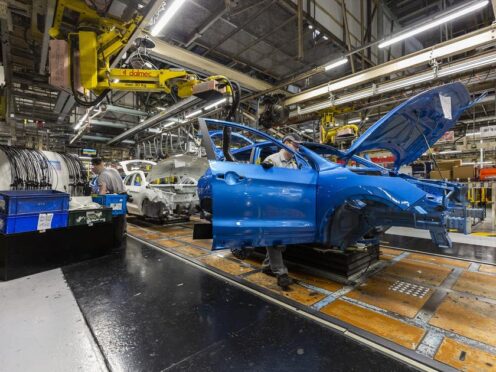The UK’s manufacturing sector suffered a fresh downturn last month as disruption to shipments in the Red Sea continued to impact firms.
The influential S&P Global/CIPS UK manufacturing PMI survey dropped to 49.1 in April, having hit a 20-month high of 50.3 in the previous month.
Any reading above 50 means a sector is in growth, while a score below this means it is contracting.
Firms highlighted in the survey that they were impacted by longer supplier delivery times, amid disruption in the Red Sea, as shipping firms diverted shipments in order to avoid attacks in the region.
Rob Dobson, director at S&P Global Market Intelligence, said: “The UK manufacturing sector suffered a renewed downturn in April, as output and new orders contracted following short-lived rebounds in March.
“The sector is still besieged by weak market confidence, client destocking and disruptions caused by the ongoing Red Sea crisis, all of which are contributing to reduced inflows of new work from domestic and overseas customers, with specific reports of difficulty securing new contract wins from Europe, the US and Asia.
“The downturn is also sustaining cost caution at manufacturers, leading to lower employment, stock holdings and cutbacks in purchasing activity.”
Production volumes declined during the month as output was “scaled back in both the intermediate and investment goods industries”.
Overall new business placed with UK manufacturers contracted over the month, with UK businesses reporting signs of weaker domestic and overseas demand.
New export business declined for the 27th consecutive month, amid reports of weaker intakes from Germany, Ireland, Asia and the US.
Meanwhile, average purchasing costs rose for the fourth successive month, with rate of increase accelerating to its highest since February 2023.
Caroline Litchfield, partner and head of manufacturing and supply chain sector at Brabners, said: “Hopes of a recovery in the UK’s manufacturing sector will need to be put on ice for now, as March’s lift in activity proved an anomaly.
“Indeed, supply-side barriers including delays to raw material deliveries and high input cost rumble on.
“And while domestic demand has picked up, geopolitical instability has fractured supply chains globally – most notably with disruptions in the Red Sea causing congestion at Mediterranean ports – to restrict international orders.”
